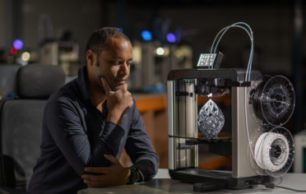FELIXprinters, a Dutch-based company has just announced the commercial launch of their latest development — a biomedical 3D-printer called FELIX BIOprinter. The device features a refined functionality and is based on the company’s flagship 3D-printer FELIX Pro 3.

The new biomedical 3D-printer is a result of the joint effort of three proficient parties: the Technical University of Denmark (DTU), Training4CRM, and the FELIXprinters company itself. Training4CRM is a scientific consortium specialized in cell-based regenerative medicine that’s represented by 15 young, yet highly qualified scientists from different European countries. The funding was provided by the European Commission as a part of the European Union Horizon 2020 Programme designated to pioneer new ways of scientific researches and improve already existing technologies and approaches. Previously, the device was showcased at Formnext 2019, an annual additive manufacturing exhibition held in Frankfurt. Now comes the time for the official launch — the company is ready to process its first pre-orders.

Just like its predecessor FELIX Pro 3, a desktop FDM 3D-printer, the new device is employing a renowned kinematics system developed by a Czech engineer Josef Prusa. The BIOprinter features a layer height starting from 20 microns that provides improved flow accuracy, while the recommended build speed is 20 mm/s with a print accuracy of ±0.05 mm for model sizes up to 20 mm. The dual head was upgraded and is now represented by two separate sterilizable syringe extruders with a modular design that allows for quick and neat replacement when needed. In addition, the system features an automatic calibration function. The syringe extruders and print bed are equipped with heating and cooling systems and are suitable for operation between 0ºС and 50ºС (32-122°F). Moreover, the drive units of the dual head are powered by potent linear motors that allow 3D-printing with materials of a dynamic viscosity up to 640 Pa · s.
The BIOprinter operates with standard 5 ml Luer lock syringes, Petri dishes, and culture plates, which eliminates the need to purchase expensive brand-specific products and provides additional cost-efficiency. You can interact with and prepare the digital model for printing with Simplify3d, a popular slicing software solution. The printer’s interface features a touch screen, a server and a camera allowing to observe and control the printing process remotely. Any additional information can be found on the manufacturer’s official website.
sprunki horror Endless Fun Awaits!



